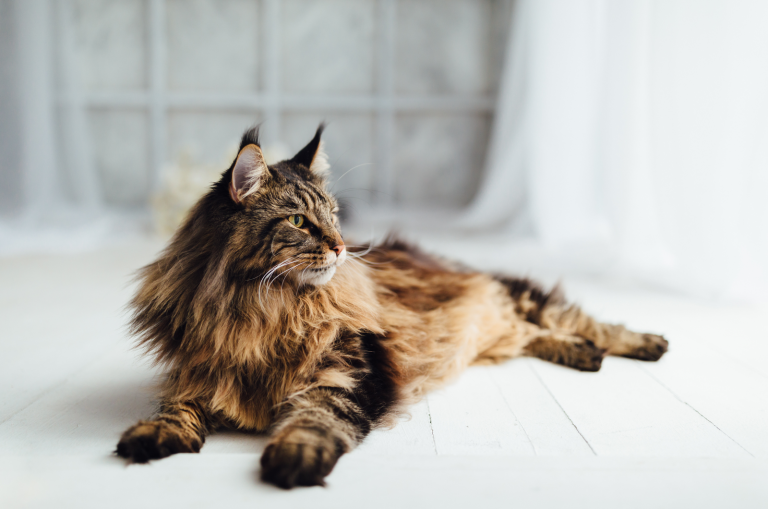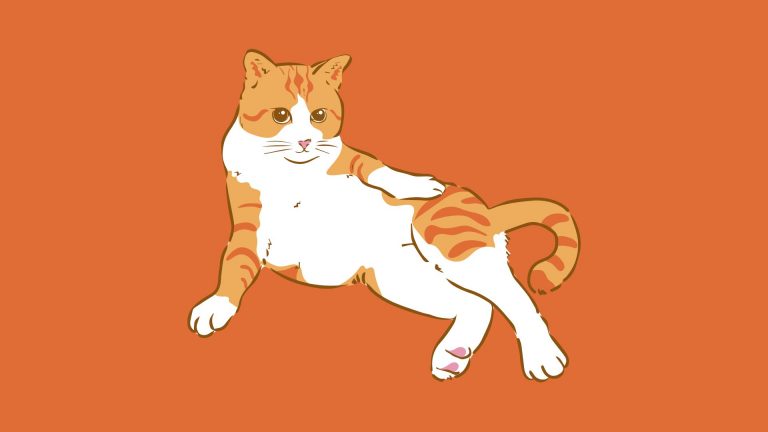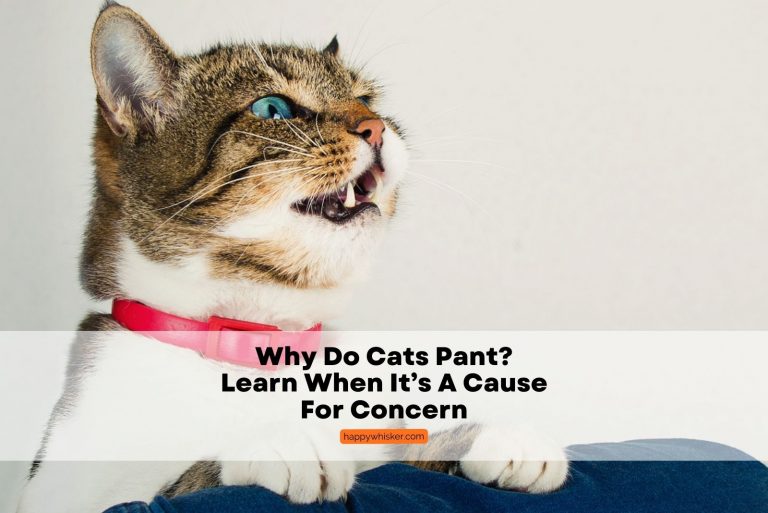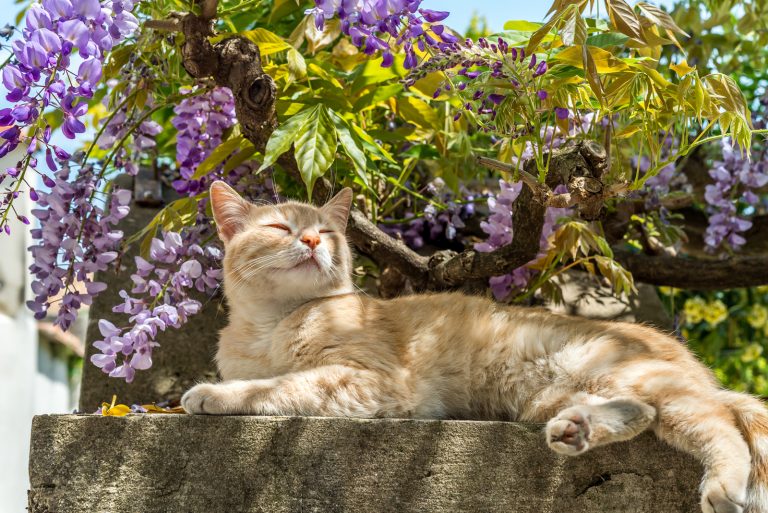Disoriented Cat With Dilated Pupils: Should You Be Worried?
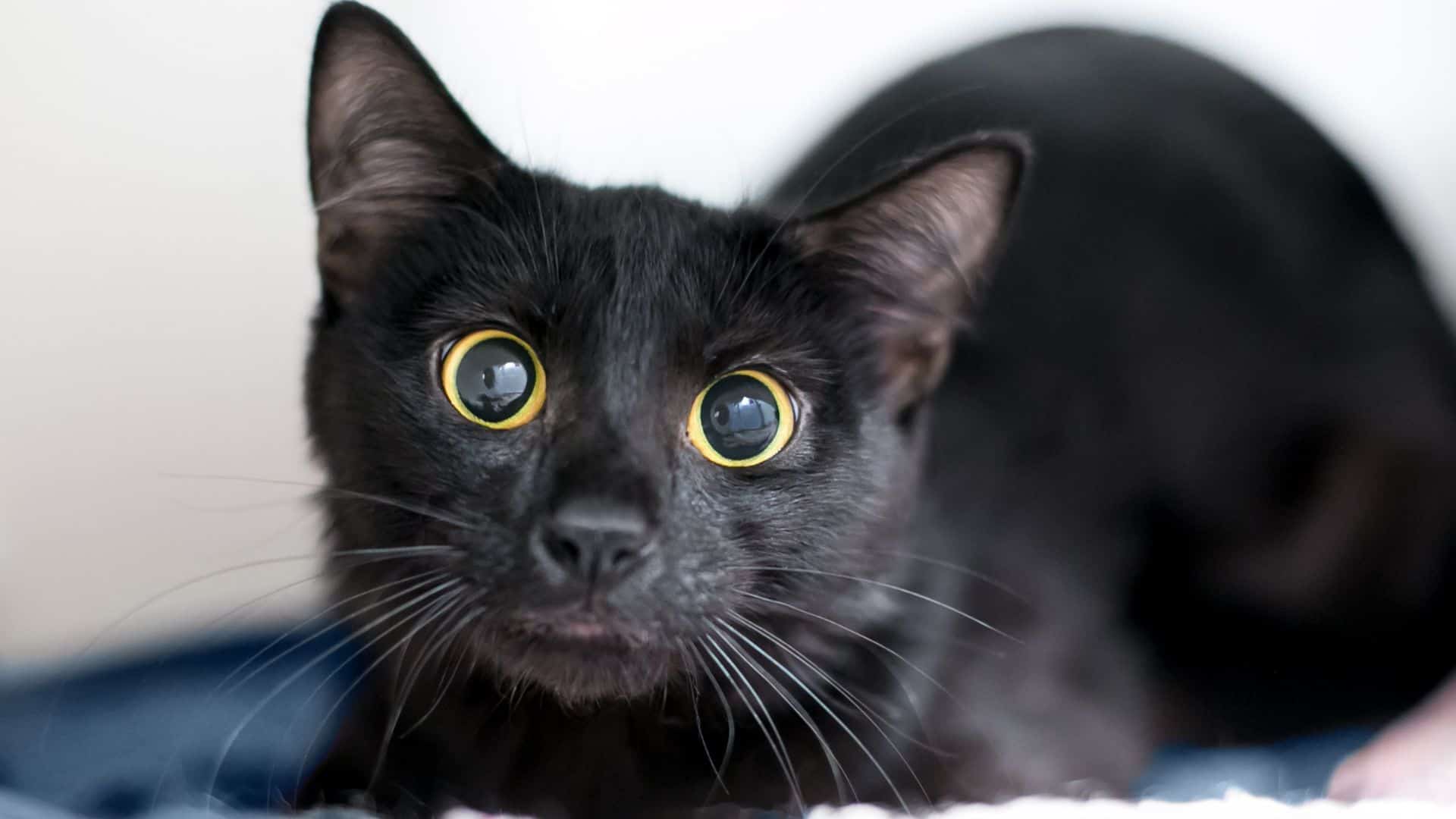
Have you noticed your kitty acting a bit confused and its pupils are dilated? If so, you must be wondering, Is my cat okay? What’s happening?
If you and your cat are in a dim light room, and its pupils are dilated to take in as much light as possible, then there’s nothing to worry about.
However, in any other case, these symptoms may indicate a more serious underlying health issue your cat is battling.
A disoriented cat with dilated pupils is not a healthy cat, and in this article, I will go over the most probable causes of your cat’s symptoms, and what you should do about it.
Disoriented Cat With Dilated Pupils
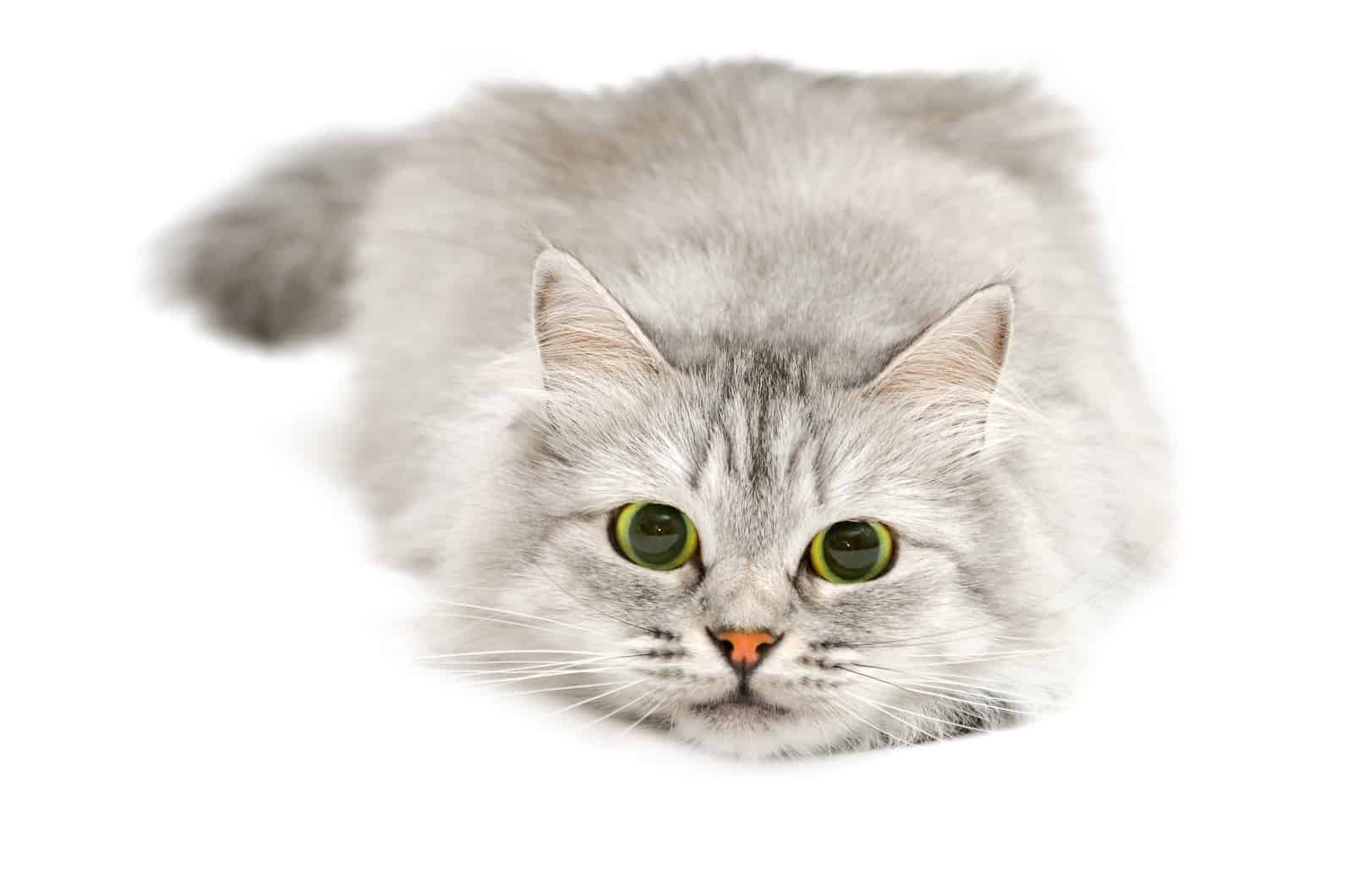
Cats pupils often dilate in low light conditions when playing and hunting. Other, less common, causes are fear and anxiety. High blood pressure and poor eyesight can cause dilated pupils as well.
However, when the dilated pupils are accompanied by disorientation, that’s a sign that something is wrong with your cat’s health.
What are the most common causes of a cat’s dilated pupils and confusion?
• Head trauma
• Trauma to other body parts
• Poisoning
• Heatstroke
• Brain tumor
• Feline Insulinoma
• Ear infection
Now that you know the most probable causes of dilated pupils and disorientation, let’s talk more about each potential health issue mentioned.
No. 1: Head Trauma
Brain damage can result from a recent fight with a larger animal, an injury from a car, or falling from a great height. Any head injury can harm the brain and the autonomic nervous system.
Brain trauma caused by an injury can lead to internal bleeding. The brain has a certain amount of room inside the skull; thus, the bleeding will ultimately impose pressure on nearby brain tissue, impairing brain function.
However, not all causes of head trauma need to be physical. Low blood sugar, low oxygen levels, and a blot clot can also impair the brain’s function.
Signs Of Head Trauma
Symptoms of head trauma, which can take several forms, include tremors, limping, an inability to walk, behavioral abnormalities, and disorientation.
Disorientation is one of the most common warning symptoms. If your cat suffers a head injury, it may appear disoriented and concussed.
Following a head injury, it’s also usual to experience vision or eye disruptions, such as dilated or unevenly sized pupils.
In addition to being confused and having dilated pupils, a cat with brain damage may also exhibit any of the following signs:
• Difficulty breathing
• Bleeding from the nose or mouth
• Seizures
• Abnormal body temperature
What Should You Do?
If you suspect your cat has suffered a head injury or it is showing any of the symptoms mentioned above, I urge you to visit the vet, as your cat’s condition requires professional help.
The underlying issue that caused the injury will always dictate how to treat a cat with a brain injury.
If the skull is fractured, a foreign item enters the skull, or there is an accumulation of fluid or blood inside the skull, the cat may require surgery.
Depending on the severity of brain trauma, the cat’s treatment and recovery can be short or very long in extreme cases.
No. 2: Trauma To Other Body Parts
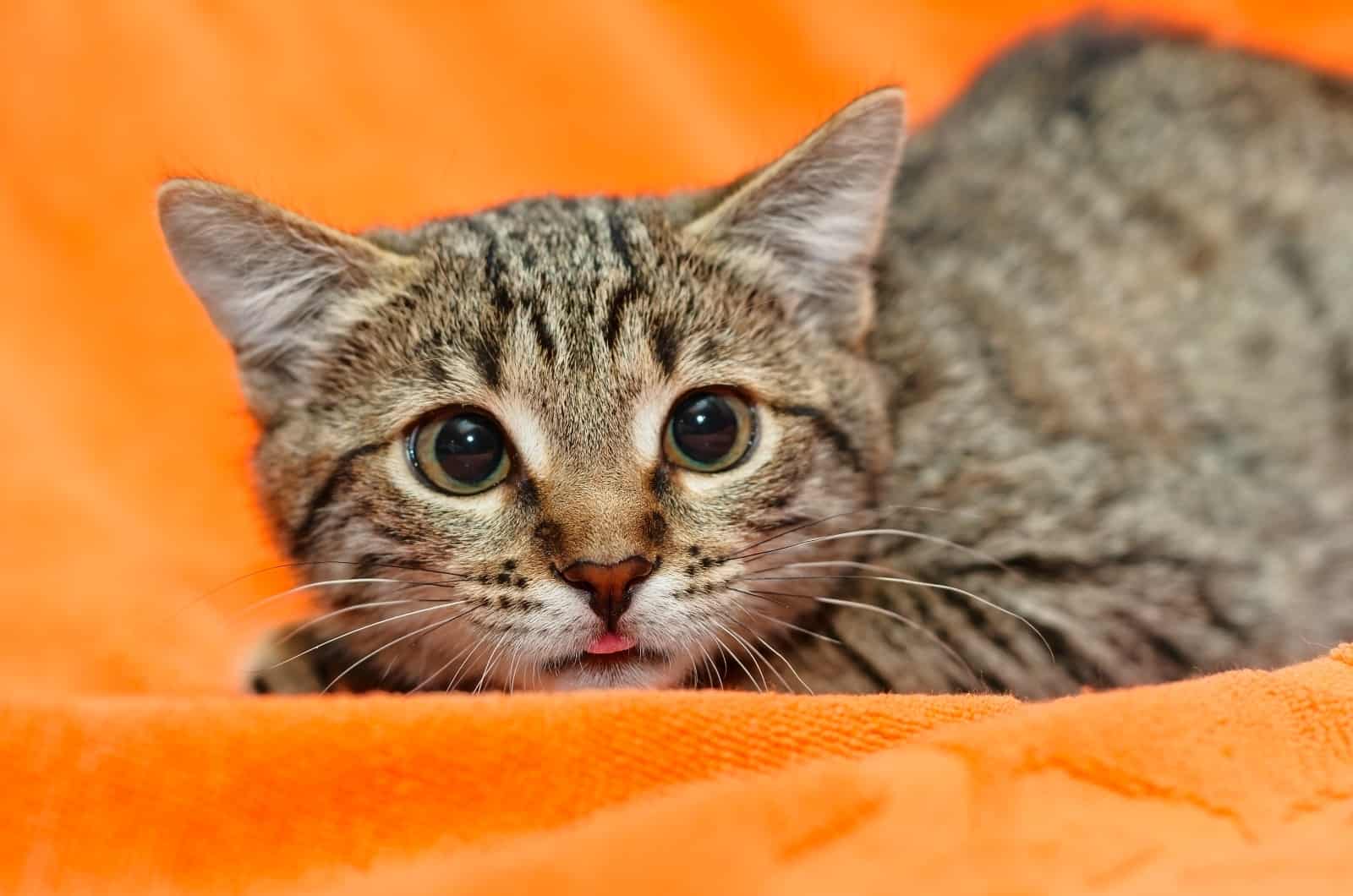
Trauma to the body is the most frequent reason for internal bleeding. Potential accidents for outside cats include getting struck by a car, being attacked by a larger animal, and falling.
Even if your cat is kept inside where it is secure, injuries that result in life-threatening internal bleeding are always possible.
Indoor cats can potentially get hurt by a reclining chair, a tumble, or being unintentionally trodden on or jammed in a door.
Signs Of Trauma
Signs a cat might be experiencing internal bleeding due to a sustained body trauma are:
• Visible wounds
• Rapid breathing
• Weakness
• Confusion
• Loss of appetite
• Pale gums
• Dilated pupils
• Abdominal bloating
• Abnormal body temperature
• Not being able to get up
• Collapse
Cat owners, if you suspect your cat has suffered trauma to any part of the body, you need to be an a look-out for an increased respiratory rate. Why?
That’s because an increased respiratory rate can indicate internal bleeding.
The drop in the cat’s blood pressure that happens as blood leaves the arteries generally causes lethargy, weakness, and collapse in the affected cats.
What Should You Do?
The bleeding needs to be stopped in both emergency and non-emergency situations.
Get your cat to the closest veterinarian clinic immediately if the cat’s symptoms are numerous and severe. Finding the bleeding spot and limiting or stopping blood loss as quickly as feasible will be the vet’s priority.
The vet must perform numerous tests to determine the underlying cause of abdominal bleeding in situations with slower blood loss. A full blood count, as well as other tests, will be required.
The presence of fluid and hematomas in the abdomen can be seen on X-rays or ultrasounds. An MRI or CT scan may be required.
No. 3: Poisoning
Many substances can harm the cat’s body, even in small amounts. Hazardous material can be ingested, inhaled, or absorbed through the skin by cats.
Cats are so small that even small amounts of harmful chemicals can rapidly cause them to become very ill.
The most common substances that cause poisoning in cats are:
• Household cleaners
• Food (chocolate, garlic, alcohol, etc.)
• Human medications
• Insecticides and rodenticides
• Toxic plants
• Essential oils
• Venom (from a snake bite, for example)
Signs Of Poisoning
The symptoms will appear rapidly if a cat has ingested something toxic; the severity and type of symptoms depend on the toxic substance.
However, the most common symptoms of poisoning in cats are:
• Dilated pupils
• Drooling
• Confusion
• Vomiting
• Diarrhea
• Difficulty breathing
• Paralysis
What Should You Do?
If you suspect your cat has ingested something poisonous, you need to go to the vet as soon as you can.
“Waiting it out” to see if your cat’s symptoms will go away might be fatal for the cat.
Make sure to give your vet as much information regarding what could’ve caused your cat’s poisoning.
The more details you can give your veterinarian about the circumstances of the poisoning, the better; as that can help your vet determine what caused the poisoning, and that the subsequent course of treatment will be.
No. 4: Heat Stroke
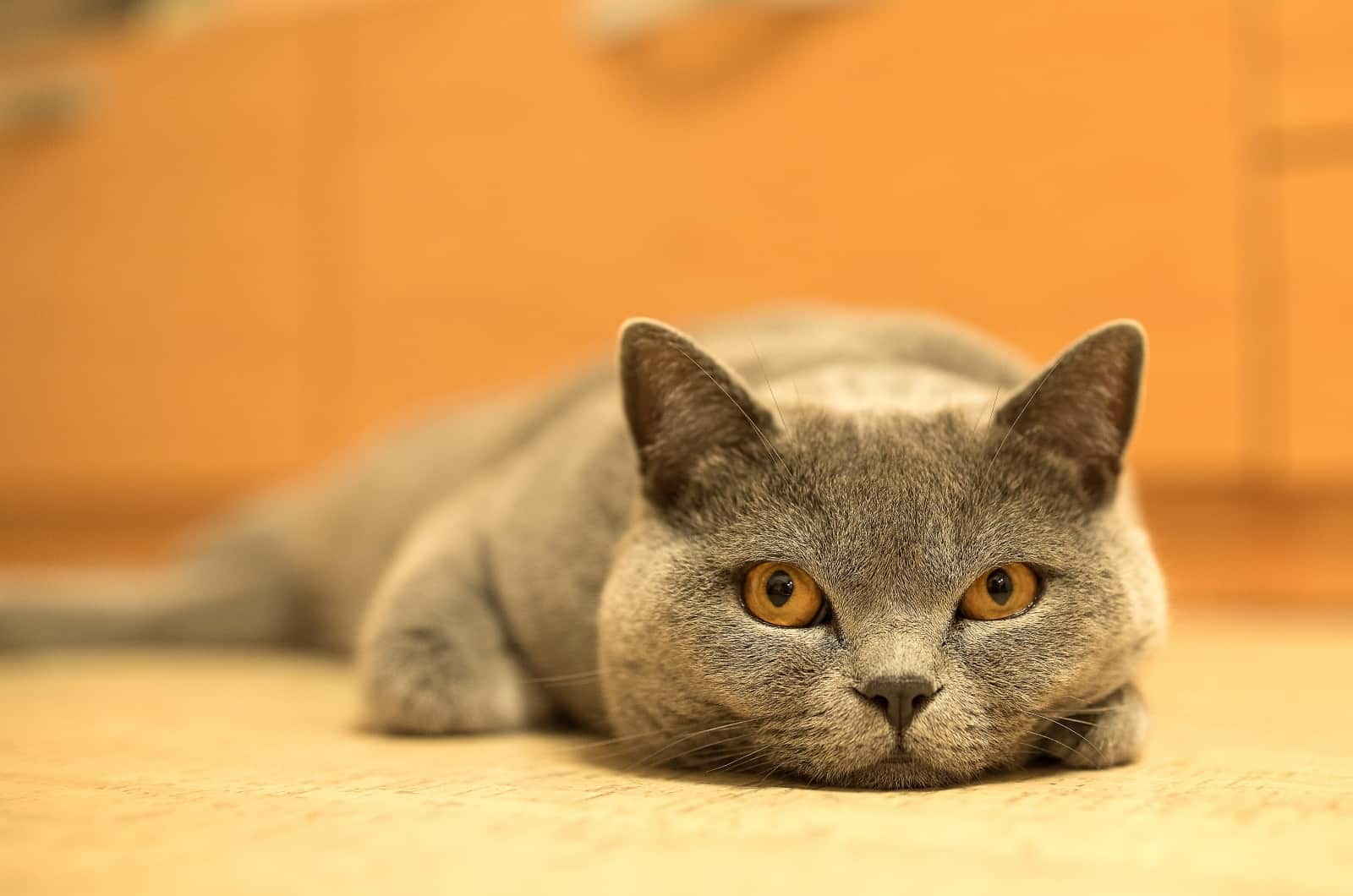
The average body temperature of cats ranges from 99.5 to 102.5 degrees Fahrenheit.
Heatstroke might set in if a cat’s internal body temperature exceeds 104 degrees. The organs and cells of the body are harmed due to heat stroke, which is life-threatening.
Although cats are not likely to get heat stroke (we hear more about it in dogs), it’s still possible for a cat to experience it.
Signs Of Heat Stroke In Cats
Apart from the obvious increase in body temperature, the most common signs of heat stroke in cats are:
• Rapid Breathing
• Vomiting
• Lethargy
• Disorientation
• Dilated pupils
• Rapid heartbeat
• Drooling
• Seizures
• Collapsing
What Should You Do?
If you suspect heatstroke, take your cat to the nearest open veterinary clinic as soon as possible.
Call the hospital or clinic for guidance on safe cooling measures when you’re on your way.
You can determine the severity of the condition by checking your cat’s body temperature.
Cat owners, you need to be cautious when cooling down an overheated cat.
Although it may appear natural to use ice or very cold water, that is not the best option to cool down your cat. Therefore, consulting your vet is highly advised.
No. 5: Brain Tumor
An uncontrolled cell proliferation is referred to as a tumor. When this uncontrolled cell proliferation (or growth) happens in the cat’s brain, that leads to the development of a brain tumor.
Although relatively rare, a cat can develop a brain tumor, but there doesn’t appear to be a particular cat breed that is more prone to developing them.
Signs Of Brain Tumor Presence
Symptoms of a brain tumor in cats are:
• Behavioral changes
• Uncoordinated movement
• Seizures
• Lethargy
• Dilated pupils
• Disorientation
• Vision loss
Seizures are the most typical sign of a brain tumor in cats, especially after the cat has been alive for at least five years.
What Should You Do?
If you suspect your cat has a brain tumor, you need to go to the vet.
Depending on the symptoms, your veterinarian may suspect your pet has a brain tumor. The vet cannot view the brain on regular X-rays, so specific diagnostic procedures are required to allow your veterinarian to observe your pet’s brain.
If the brain tumor is diagnosed, the treatment will provide your pet with the greatest possible quality of life as long as possible.
No. 6: Feline Insulinoma

The cells that produce insulin are known as beta cells and are dispersed found throughout the pancreatic tissue.
Cats can develop beta cell tumors (known as insulinomas), which cause an increase in insulin production.
According to the MSD Veterinary Manual, feline insulinoma is rare in cats.
Signs Of Feline Insulinoma
Symptoms of feline insulinoma are:
• Dilated pupils
• Increased appetite
• Weakness
• Nausea
• Mental confusion
• Rapid breathing
• Muscle twitching
• Seizures
Initially sporadic, signs gradually increase in frequency and duration as the condition worsens.
What Should You Do?
If you notice any of the symptoms mentioned above, you must take your cat to the vet.
Once the veterinarian is certain that too much insulin is being generated and suspects insulinoma, the next step is performing an ultrasound.
They will use ultrasound to confirm the presence of a tumor in the pancreas and to localize it, so the surgeon knows where to look for it.
If feasible, the vet will surgically remove the tumor; if not, medicinal therapy, such as steroids to encourage glucose formation and nutritional control, will be used.
Unfortunately, insulinomas are frequently cancerous, but if all major tumors are removed, cats can live for more than a year with an excellent quality of life.
No. 7: Ear Infection
Ear infections are more common in cats that have diabetes, allergies, or a weakened immune system.
Infections in the middle ear are typically the result of an infection that has moved from the outer ear canal to the middle ear.
It’s crucial to get treatment for your cat’s ear infection as soon as symptoms appear since an outer ear infection can quickly move to the middle ear and onto the inner ear.
Hearing loss in cats may come from untreated ear infections.
Signs Of Ear Infection In Cats
The most common signs of an ear infection in cats are:
• Head tilting
• Pawing at the ear
• Ear discharge
• Foul odor
• Hearing loss
• Disorientation
• Loss of balance
• Uneven pupil size (characteristic of inner ear infection)
What Should You Do?
If you suspect your cat has an ear infection, please visit the vet, as an ear infection cannot be treated at home.
Treatment for feline ear infections is often simple. To begin, your vet may cut the fur surrounding your cat’s ear canal to keep it clean and dry.
If the infection has spread to the middle ear, but the eardrum has not been damaged, oral or injectable antibiotics may be used to clear the infection.
Other Notable Health Issues
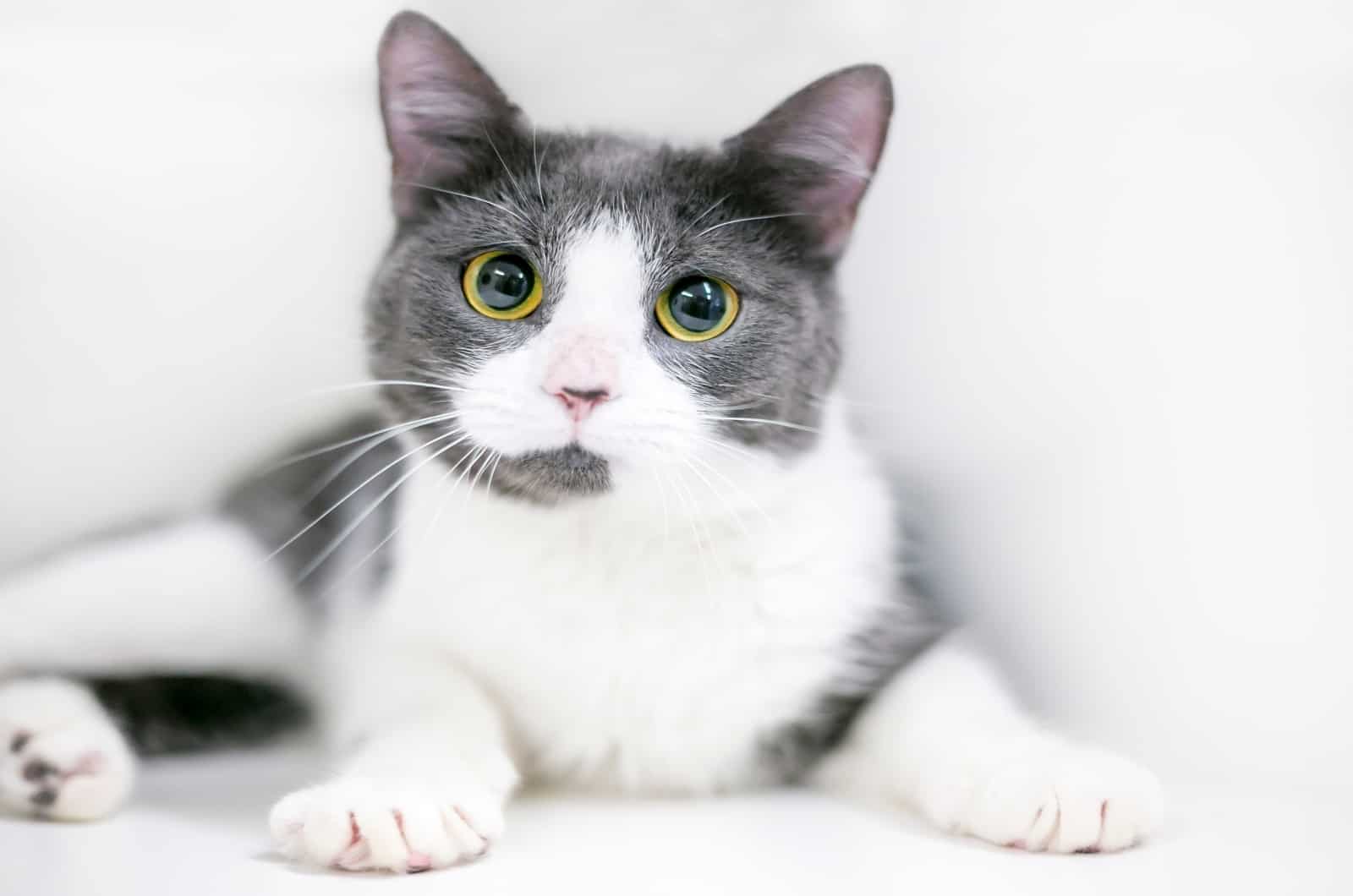
Besides the seven mentioned health issues, other medical conditions can cause disorientation and/or dilated pupils as well, and I will go over them briefly.
Anisocoria
Another possible explanation for dilated pupils is anisocoria, characterized by one pupil being dilated and the other constricted.
Anisocoria can be brought on by various illnesses, from injuries to the nerves or the brain to eye problems like glaucoma.
If you find your cat is experiencing this, it is recommended to take your cat to the vet.
Poor Vision
If you notice your cat’s pupils are dilated, it might be because your cat’s vision is not good.
The function of a cat’s pupils is to regulate the amount of light entering the eye. The more dilated the pupils are, the more light enters the eye for processing.
If a cat has poor vision, the pupils dilate to let in as much light as possible.
A cat with dilated pupils may be blind. A sudden loss of direction, difficulty locating their food and water bowls, slamming into things, and a lack of desire to move around are all potential indicators of vision loss.
Hyperthyroidism
When the thyroid gland over-produces thyroid hormones, hyperthyroidism is the outcome.
Let me note that hyperthyroidism is also the most prevalent endocrine condition affecting cats older than eight years.
Even though cats have an increased appetite, weight loss is the most typical indication of hyperthyroidism in cats. Other typical symptoms include an unruly hair coat, vomiting, diarrhea, hyperactivity, frequent drinking of water, and increased heart rate.
Feline Cognitive Dysfunction
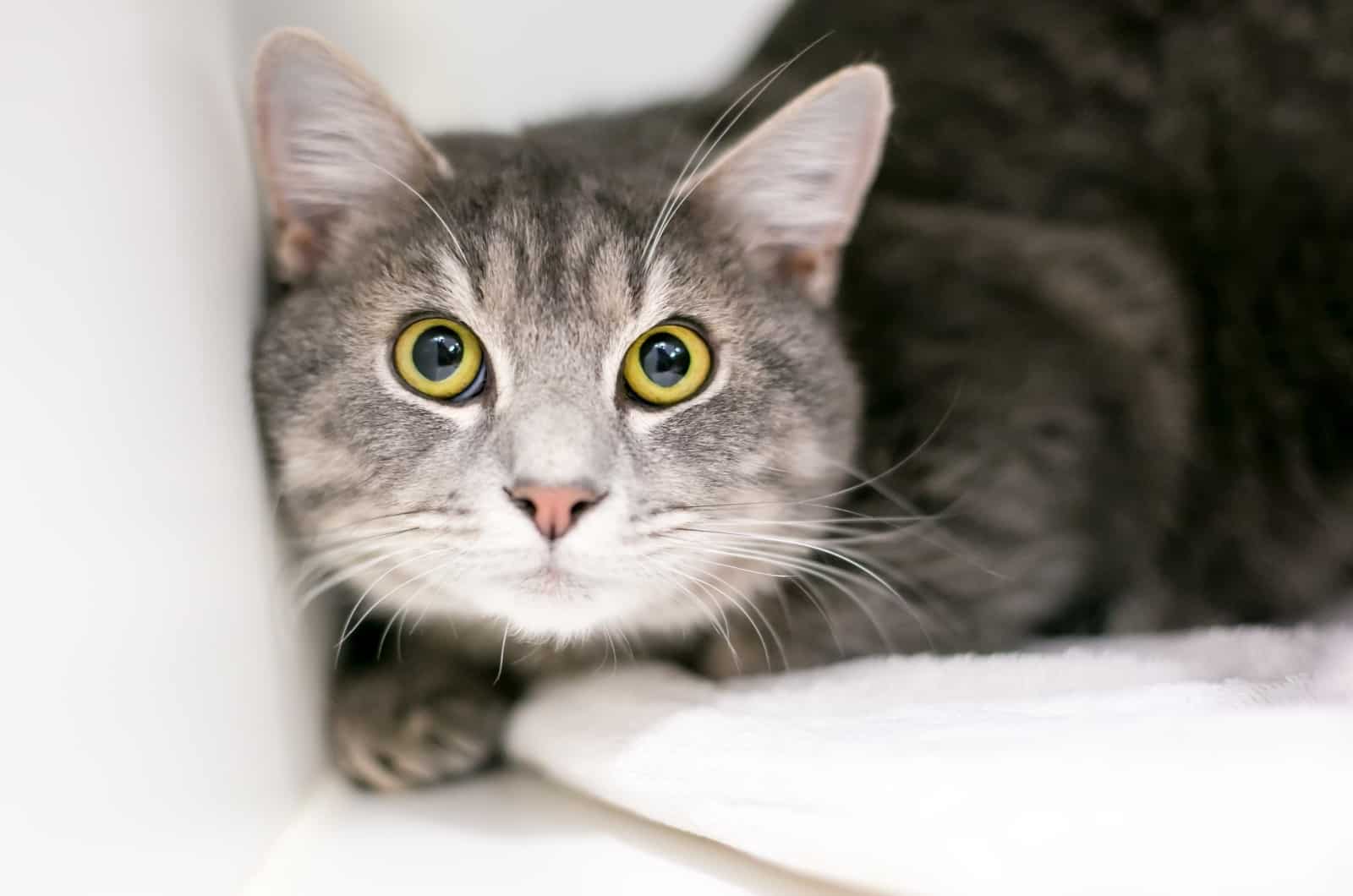
Cognitive dysfunction syndrome (CDS), sometimes known as “cat dementia,” is a condition that affects older cats.
This condition is characterized by symptoms such as disorientation, irritability, lack of self-grooming, forgetting things (such as where the litter box is), increased vocalization, etc.
Although feline dementia symptoms start mild, they worsen over time.
Vestibular Disease
Symptoms such as disorientation can arise due to an underlying illness known as vestibular disease.
The cat’s vestibular system maintains a sense of balance, orientation, and direction. Therefore, if there’s something wrong with the vestibular system, balance and coordination are negatively impacted, causing the cat to become disoriented.
Inner and middle ear infections usually cause vestibular disease.
High Blood Pressure
One possible reason the pupils may dilate is hypertension (high blood pressure).
Primary hypertension is when other medical conditions do not cause high blood pressure.
Secondary high blood pressure is a reasonably prevalent condition that coexists with, and is caused by, various illnesses, such as kidney failure and an overactive thyroid gland.
With secondary hypertension, you may have also seen other symptoms of poor health, such as a change in weight, appetite loss, or poor coat quality.
Feline Dysautonomia
The autonomic nervous system, which regulates several reflexes and other involuntary neurologic activities, is afflicted by feline dysautonomia, also known as Key-Gaskell syndrome. All breeds and age ranges are prone; however, younger cats may be more sensitive.
The most notable symptom of feline dysautonomia is dilated pupils, the presence of the third eyelid, and loss of appetite.
The only treatment option is to control symptoms, as there is no known cure for this disorder.
Retinal Detachment
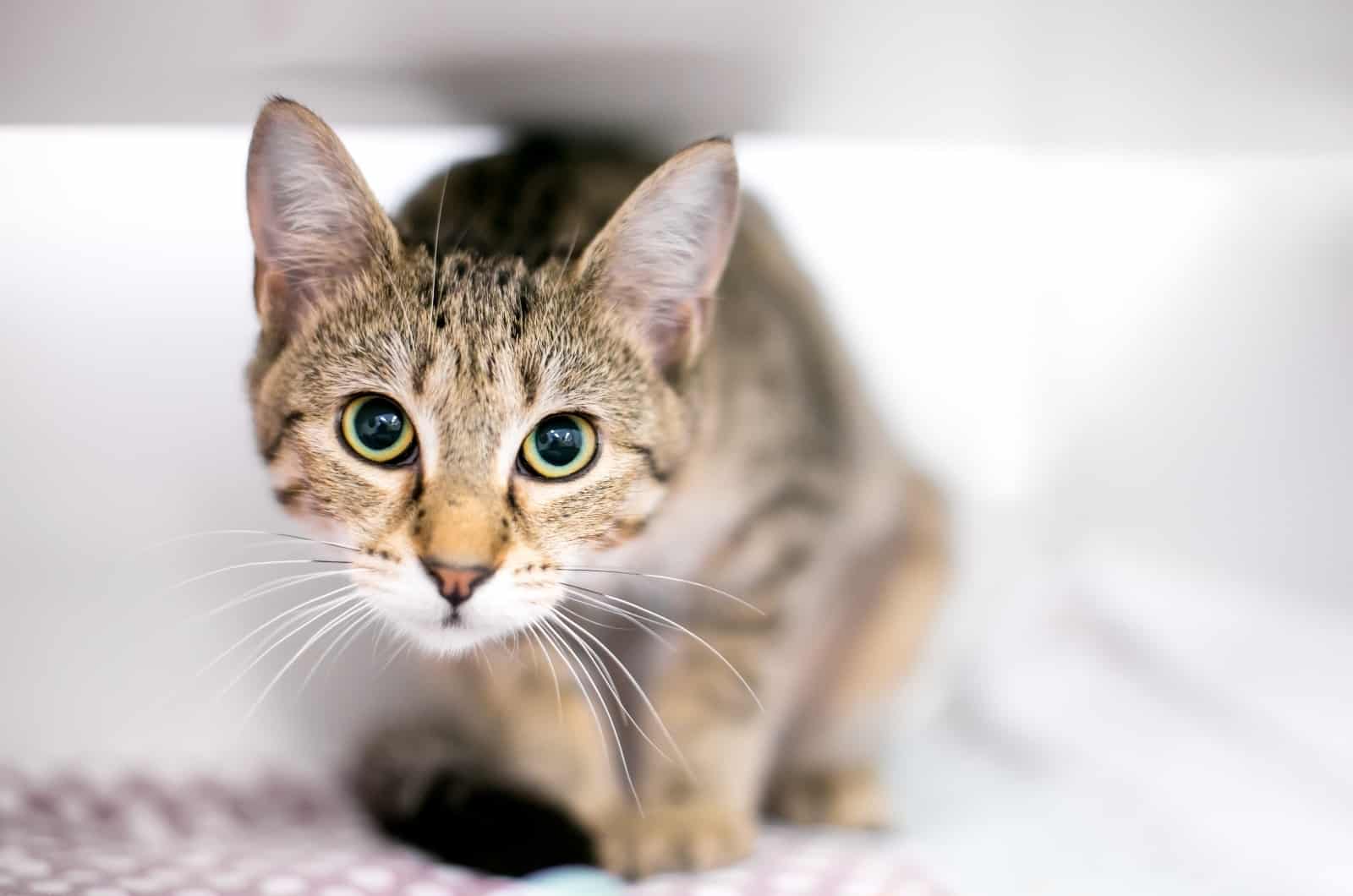
Cats with retinal detachment have their retina separated from the lining of the eyeball.
Clinical signs of retinal detachment include abnormal pupil dilation, bumping into things, and not moving around as much.
If treatment for retinal detachment is postponed, your cat might become permanently blind. Therefore, if you suspect your cat has this health condition, please see a vet.
Glaucoma
Inadequate aqueous fluid outflow is the primary cause of glaucoma, and high intraocular pressure damages the retina and optic nerve.
The most frequent reason is an obstruction to the drainage system inside the eye, which causes a build-up of fluid.
Common symptoms of feline glaucoma are the cat squinting and rubbing the eye, watery eye discharge, swelling of the eye, dilated pupil, and blindness (if untreated)
Vitamin B1 Deficiency
Thiamine, often referred to as vitamin B1, is a water-soluble vitamin required for cats’ normal metabolism.
Lack of this vitamin leads to pupil dilation, poor coordination, head tilting, falling, etc.
Before neurological problems appear, other symptoms, including vomiting, excessive salivation, decreased appetite, and weight loss, may be present.
Feline Infectious Peritonitis (FIP)
A viral illness known as feline infectious peritonitis (FIP) affects cats worldwide. It’s infamous because it’s difficult to diagnose and has a high fatality rate.
Symptoms of FIP are fever, loss of appetite, lethargy, weakness, disorientation, respiratory issues, and many others, depending on the form of the disease (wet or dry).
Sodium Deficiency
Hyponatremia is when a cat has an unusually low sodium level in the blood.
Although sodium deficiency usually happens gradually, it’s possible for it to happen rapidly as well. When it occurs rapidly, the cat’s brain will experience shock and develop severe neurological issues that, if left untreated, can be deadly.
Symptoms of sodium deficiency include anorexia, weakness, lethargy, confusion, vomiting, and seizures.
Going To The Vet – Yes Or No?
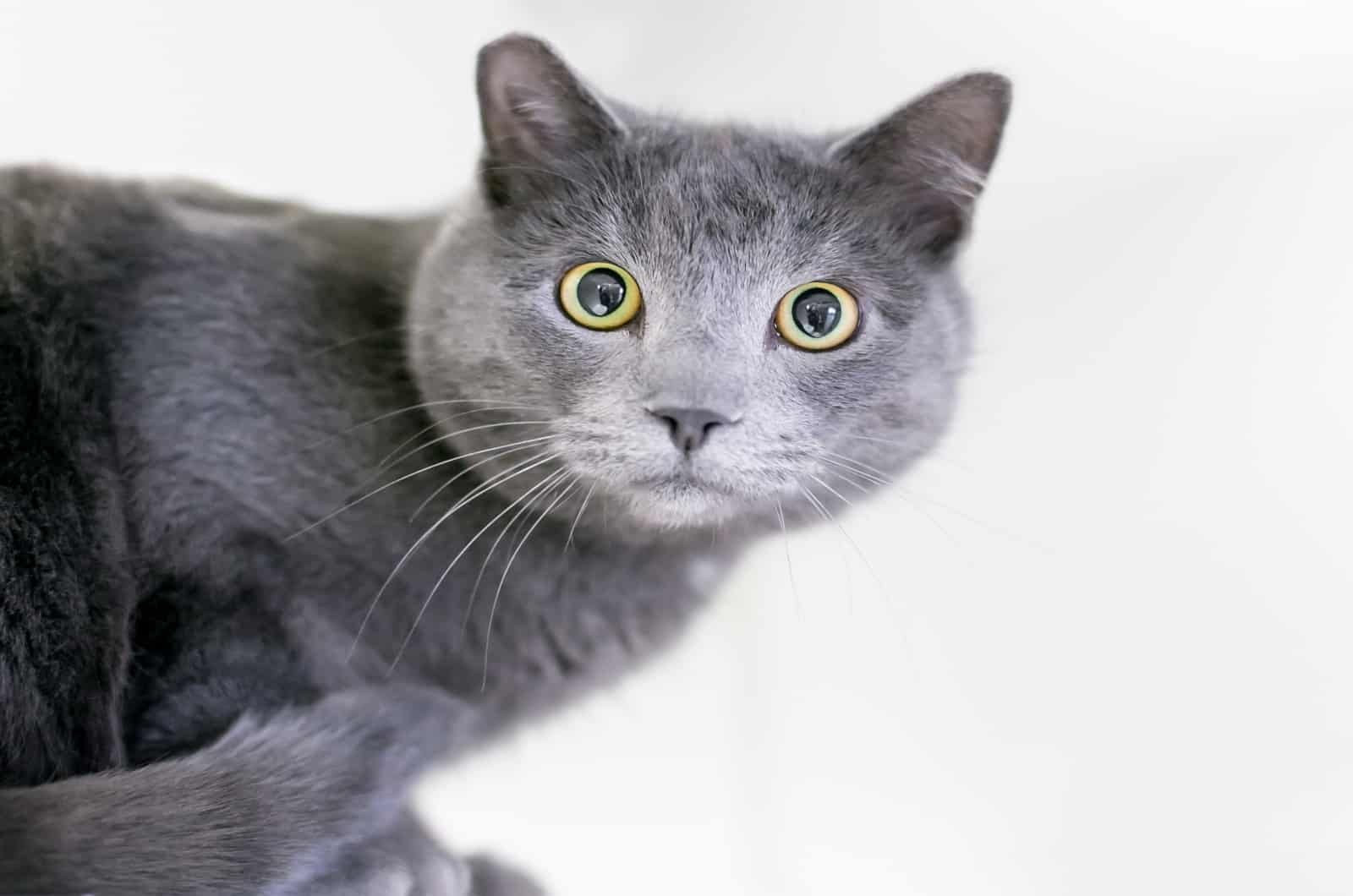
Any cat exhibiting disorientation, odd behavior, and dilated pupils should be taken to the vet’s office as quickly as possible.
Identifying the precise cause (such as a plant toxin) is crucial to treat the poisoning efficiently.
The vet will surely check your cat’s general health via a urinalysis, biochemical profile, and blood test.
Depending on the results of the tests, the vet will proceed with more specific diagnostic tests (based on what they suspect is causing your cat’s symptoms).
In Conclusion
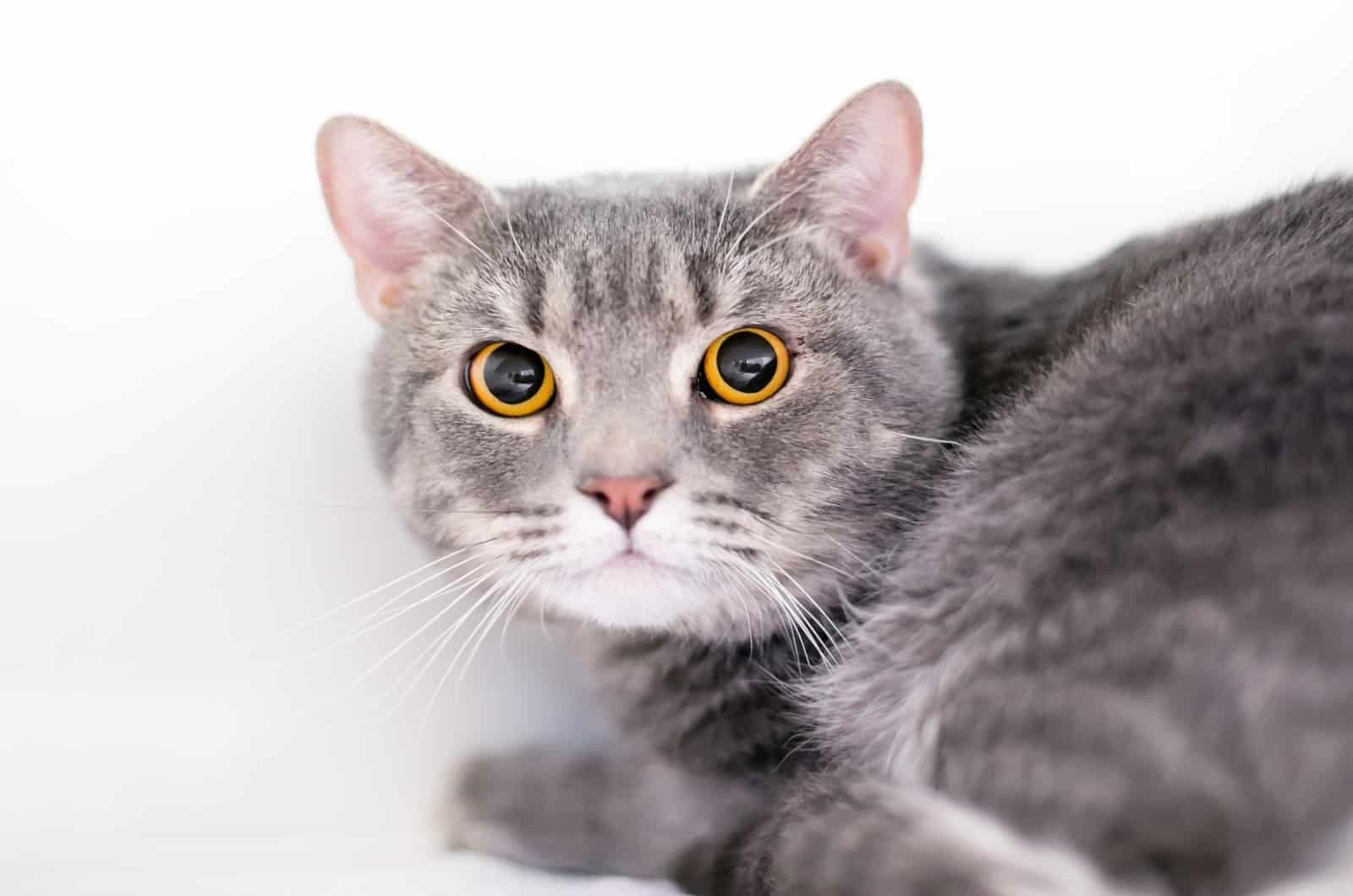
Have you seen a disoriented cat with dilated pupils, or has your cat displayed these symptoms? If the answer is Yes, it’s best to take the cat to the vet.
There are several possible causes of cat disorientation and dilated pupils, such as head trauma, body trauma, poisoning, heat stroke, brain tumor, insulinoma and ear infection.
Considering all of these are symptoms of serious and potentially life-threatening medical conditions, the best thing you can do is seek veterinary care for your feline friend!

